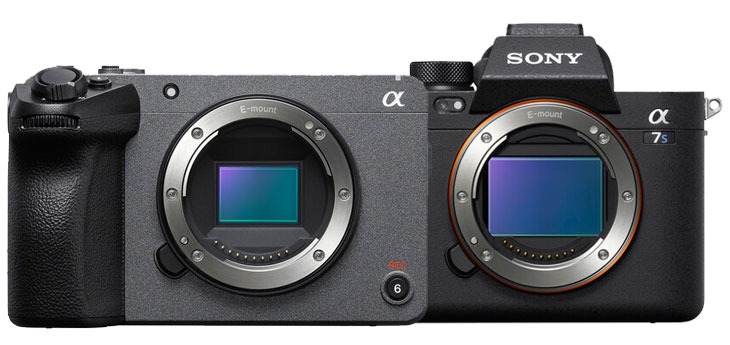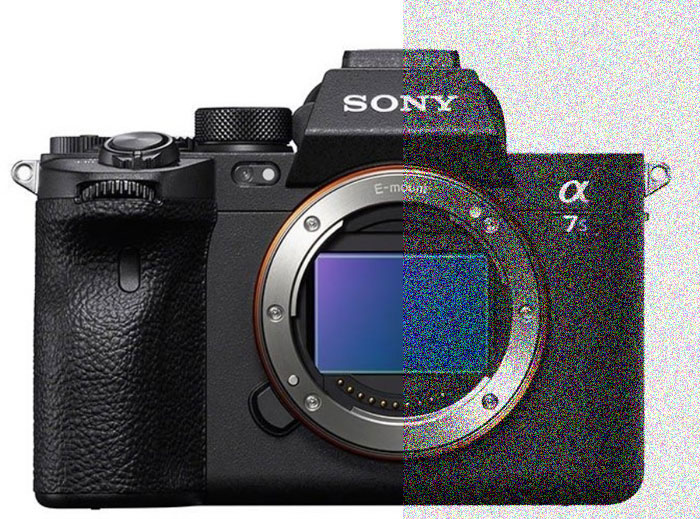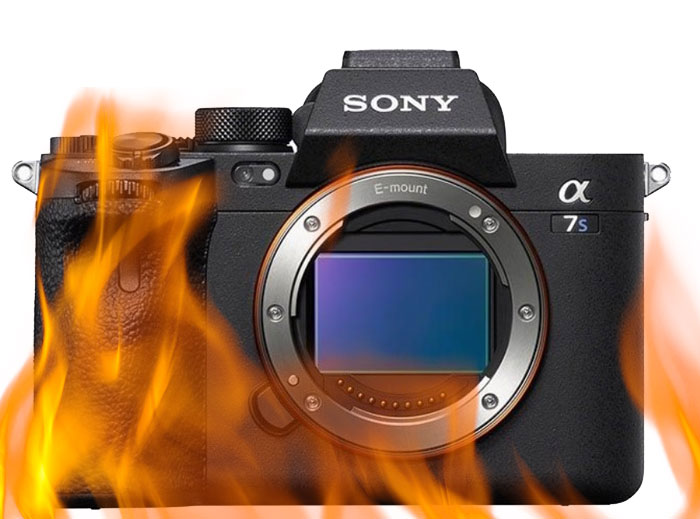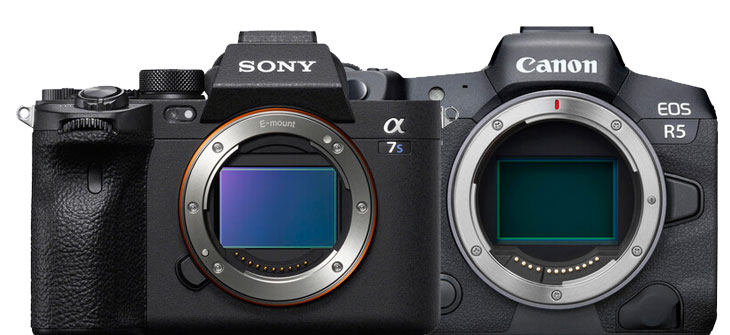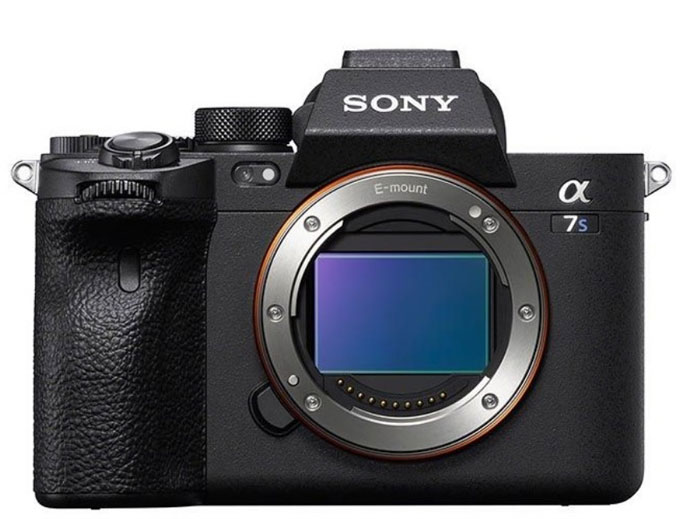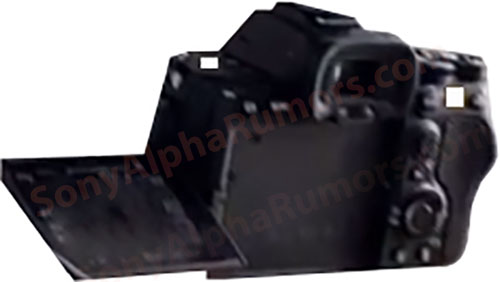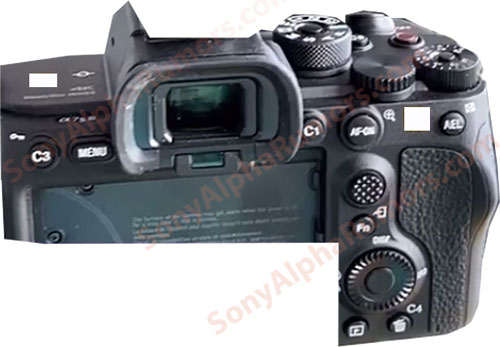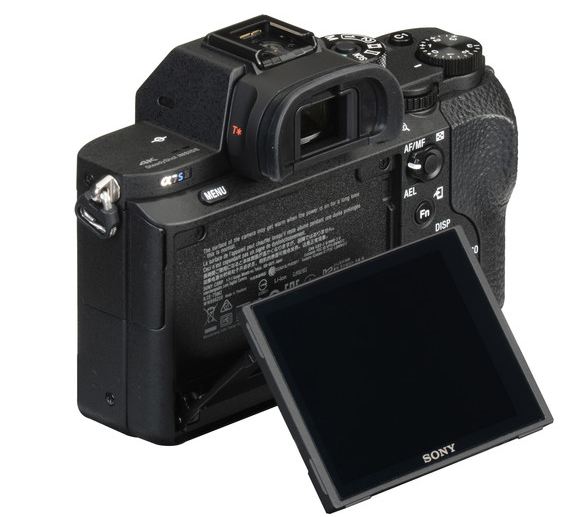
Sony finally announced the long-rumored Sony A7S III camera, the camera features a redesigned 12MP BSI CMOS Sensor. The camera also features the latest generation of the BionZ XR image processor. The camera features no overheating issue even when used for 1 hour at 4k 60p as claimed by the camera maker.
Sony A7S III camera features a native ISO range of 80-102400, which can expand to 40-409600. So, specifically for low-light video work, the camera will work like a charm. Sony claims that the sensor is brand new and features 2X readout speed compared to the older gen. of the Sony A7S II sensor which in turn reduces the rolling shutter effect of the sensor.
Sony A7S III Major Features
- 12MP BSI CMOS sensor
- Bionz XR processor
- On-sensor phase detection
- 759-Point Fast Hybrid AF
- ISO 80-102,400 (expandable to 40-409,600)
- 9.44M dot EVF with 0.91x magnification
- 4K video at up to 120p, 60p for ‘at least an hour’
- 16-bit Raw video output at up to 60p
- 10-bit 4:2:2 internal capture (in codecs including H.265 and All-I H.264)
- Fully articulating LCD
- 5-axis in-body stabilization with Steady shot active mode
- Twin card slots that each accept either SD or CFexpress Type A
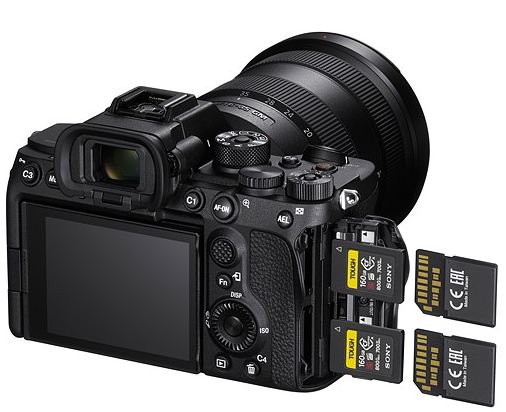
Finally, Sony added a Var-angle display screen to its Fullframe cameras after introducing it in Sony ZV1 camera.The menu system has been refined and is easier to navigate. The camera has a full-size HDMI port along with headphones and mic sockets, dual-band Wi-Fi, and support for USB Power Delivery. It has twin dual-format memory card slots, both of which can handle an SD or CFexpress Type A card.
The a7S III will be available in late September for $3499.
Get the Sony A7S III Camera from B&H Store
1. Sony A7S III Press Release
Highly Anticipated Sony Alpha 7S III Combines Supreme Imaging Performance with Classic “S” Series Sensitivity
New Alpha 7S III Empowers Creators with 4K 120P[i] Video, 10-bit 4:2:2 Recording, 15+ Stop Dynamic Range[ii], Improved AF Performance and More
- Newly developed BIONZ XR™ image processing engine with eight times more processing power[iii] and a brand new 12.1-megapixel (, effective) back-illuminated full-frame Exmor R™ CMOS image sensor, significantly reduced rolling shutter effect[iv]
- Ultra-high sensitivity with ISO range expandable from 40 – 409,600[v], and improved image quality by approximately 1 stop noise reduction[iv] in the middle and high sensitivity ranges
- Video recording capabilities include 4K 120p[i], 10 bit 4:2:2 color depth, All-Intra recording, XAVC HS format with H.265 codec and more
- 15+ stop dynamic range for movies[ii]
- 4K 60p 16-bit RAW video HDMI output for the first time in the Alpha™ series
- Fast Hybrid AF system with 759 point phase-detection[vi] AF sensors covering 92% of image sensor
- Enhanced Real-time Eye AF for movie recording[vii] and still image recording
- New heat dissipating mechanism and dual slot relay recording enables over one-hour long 4K 60p 10-bit 4:2:2 movie shooting[viii]
- 5-axis optical in-body image stabilization supports handheld movie shooting, with added Active Mode [ix] to support especially difficult handheld movie shooting
- World’s brightest[x] and largest[x] new 0.64-type 9.44 million-dot OLED electronic viewfinder
- Side Opening variable angle LCD screen enhances shooting flexibility
- Completely redesigned menu system with touch screen interface and touch operation
- High-speed continuous still image shooting at up to 10fps[xi] for more than 1,000 consecutive uncompressed RAW images[xii] with full AF / AE tracking
- Dual CFexpress Type A card slots that enable high speed data processing while keeping the compact size
SAN DIEGO – July 28, 2020 –Today, Sony Electronics Inc. announced the long-awaited addition to its acclaimed Alpha 7S full-frame mirrorless camera series — the Alpha 7S III (model ILCE-7SM3).
Featuring a brand new 12.1MP (approx., effective) back-illuminated full-frame image sensor with ultra-high sensitivity and 15+ stop wide dynamic range[ii], a host of impressive video recording capabilities including 4K 120p[i] and 10-bit 4:2:2 color depth, a new heat dissipating mechanism, dual slot relay recording enabling over one-hour of 4K 60p movie shooting[viii], a new autofocus system, and touch screen interface and side flip LCD screen, the new Alpha 7S III will become the ultimate creative tool for video professionals and all types of hybrid still/video shooters.
“The Alpha 7S III is the ultimate representation of Sony’s passion to solve our customers’ pain points,”, said Neal Manowitz, deputy president for Imaging Products and Solutions Americas at Sony Electronics. “We are always listening to our customers’ feedback, pushing hard to deliver innovation that goes far beyond their expectations. There is no better example than this new camera. Combining classic S series sensitivity with a feature set, performance level and user experience that is simply unmatched in the market today — at any price level — the Alpha 7S III opens up a new world of possibilities for today’s creators.”
The system architecture for the new Alpha 7S III has been completely redesigned to deliver exceptional video and still shooting performance. The new 35mm full-frame 12.1MP (approx., effective) back-illuminated Exmor R™ CMOS image sensor reduces rolling shutter by up to three times[iv] and utilizes a variety of advanced light-gathering techniques to ensure high-sensitivity with low noise, allowing users to shoot in low-light situations without needing large-scale lighting setups. In addition to improved image quality, this new image sensor includes a focal plane phase-detection AF system for the first time in an S-series camera.
To compliment the new sensor, the Alpha 7S III also includes a new BIONZ XR™ image processing engine that provides up to eight times more processing power[iii], minimizes processing latency, and enables many of the hallmark still and imaging features of the camera. The new system also includes the world’s brightest[x] and largest[x] 9.44 million-dot (approx.) OLED electronic eye-level viewfinder and is the world’s first camera[x] with dual CFexpress Type A card slots, enabling high-speed data transfer in a compact size.
Professional Video Workflow Solutions
The Alpha 7S III offers in-camera 4K recording up to 120 frames per secondi, 10-bit depth and 4:2:2 color sampling, producing stunning video recording. The new camera offers a more flexible and efficient post-production workflow with a variety of advanced movie recording modes such as All-Intra[xiii] and MPEG-H HEVC/H.265 coding (XAVC HS™)[xiv]. The Alpha 7S III makes it easy to integrate video recordings with other professional camcorders by providing three color gamut settings S-Gamut, S-Gamut3, and S-Gamut3.Cine, allowing users to easily match footage shot on the Alpha 7S III with footage shot on the professional camcorders simplifying multi-camera post-production workflow. In addition to S-Log3 gamma curves, the Alpha 7S III supports an HLG (Hybrid Log-Gamma) picture profile with minimum post-production. The Alpha 7S III also allows up to 4K 60p 16-bit RAW output[xv] to an external recorder via HDMI Type-A[xvi] connector, offering additional post-production flexibility.
Improved Image Quality
The new CMOS image sensor and BIONZ XR™ image processing engine in the Alpha 7S III delivers legendary S-series sensitivity with significantly enhanced color reproduction and texture renderings for improved overall image quality. The base ISO has been lowered to 80, resulting in a normal range of 80-102,400 (expandable to 80-409,600 for video and 40-409,600 for stills) to provide more flexible ISO plus wide dynamic range with low noise at all settings. It offers improved image quality by approximately 1 stop of noise reduction[iv] in the middle and high sensitivity ranges.
The colors and textures of foliage, human skin, and more are ideally and consistently reproduced without dependence on light sources. Gradation rendering has also been refined for better looking skin tones and highlight roll-off in portraits. It also improves AWB (Auto White Balance) performance with a new “Visible light + IR Sensor” that helps to achieve more precise white balance under artificial lighting, including fluorescent and LED lights.
Versatile Operability
Advanced Autofocus Performance for Hybrid use
For the first time in an Alpha 7S series camera, the Alpha 7S III offers Fast Hybrid AF by combining phase-detection and contrast-detection AF, giving it the ability to track subjects over a wide area with outstanding speed, precision and smoothness, even when using a narrow depth of field. Fine focus expression is possible with Sony’s E-mount lenses.
For environments with a lot of movement, Real-time Tracking and Real-time Eye AF are available to maintain constant focus on the intended subject. Sony’s advanced Real-time Eye AF improves detection performance by 30% over the previous system[iii], thanks to the new image processing engine. It ensures accurate, reliable detection, even when the subject’s face looks away. Real-time Tracking is initiated simply by touching the subject on the screen. Real-time Eye AF is automatically initiated when an eye is detected.
Flexible Autofocus Settings for Movie Shooting
Based on customer feedback, the camera includes several AF features for professional users including AF Transition Speed in seven settings, to easily create rack-focus transitions, and five AF Subject Shift Sensitivity settings, which allows the user to customize how easily AF will switch or stay with the locked-on subject. Touch Tracking allows user to not only initiate Real-time Tracking, but also compose and shoot while using a gimbal or while shooting solo. It’s now possible to Touch Focus during manual focus mode on the LCD screen or remotely from the Imaging Edge Mobile application[xvii].
New Heat-dissipating Structure
The Alpha 7S III’s design has been updated to ensure effective heat dissipation and minimizes overheating — even during extended continuous recording sessions at 4K 60p 10-bit 4:2:2 video lasting an hour or more[viii]. A newly developed unique heat dissipating structure keeps the image sensor and image processing engine temperatures within their normal operating ranges, preventing overheating while maintaining compact body dimensions. The new heat-dissipating structure requires no fan or cabinet vents allowing Alpha 7S III to maintain dust and moisture resistance[xviii].
Movie Assist Functions
For video on-the-go, the Alpha 7S III is the first Alpha series camera to include Active Modeix with 5-axis optical in-body image stabilization to support especially difficult handheld movie shooting. It is also the first Alpha series E-mount body to feature a side-opening vari-angle rear screen, perfect for gimbal-mounted shots, complicated angles, handheld operation and more. The screen rotates sideways, up and down, and features a 3.0 type 1.44 million-dot (approx.) touch panel LCD monitor, for optimal visibility even in bright outdoor environments.
In addition, the Alpha 7S III provides a selection of new Creative Look with 10 presets that can be used for both photo and video shoots, making it easy to create interesting moods right in the camera to be used as is or customized by the user.
A digital audio interface has been added to the camera’s Multi-Interface (MI) Shoe for clearer audio recordings from a compatible Sony external microphone. Used with Sony’s XLR-K3M XLR Adaptor Kit, the Alpha 7S III provides 4-channel 24-bit digital audio recording capability in an Alpha series camera for the first time. Like other MI shoe accessories, no cables or batteries are required, providing unrestrained freedom for Alpha system moviemaking.
Additional movie assist functions include a redesigned monitor display with a bold, clearly visible red frame that makes it clear when recording is in progress even when mounted on a rig or gimbal, custom zoom settings, adjustable white balance while recording, display rotation, interval recording, still extraction from movies and more.
Outstanding Still Image Photography
The Alpha 7S III includes a fast Hybrid AF system with 759 phase-detection AF points covering 92% of the image sensor. The camera can also achieve high AF precision to accurately and reliably focus in light down to EV-6[xix], where subjects are difficult to see clearly even with the naked eye. Users can continuously shoot more than 1,000 uncompressed RAW[xii] images at up to 10fps, or up to 8fps in live view mode, with either the mechanical or electronic shutter.
The Alpha 7S III also includes the world’s first[x] 9.44 million-dot (approx.), 0.64 type Quad-XGA electronic viewfinder with a high-definition OLED display and refined. The Alpha 7S III viewfinder offers a 0.90x viewfinder magnification[xx], 41° diagonal field of view, 25mm high eyepoint for clear, low-distortion corner to corner viewing. It is also dust, fog and moisture resistant[xviii], extremely responsive, and has switchable modes for different subject types. Every aspect of the Alpha 7S III viewfinder has been designed and refined for a professional workflow.
For the first time in one of Sony’s digital cameras, the Alpha 7S III includes HEIF (High Efficiency Image File Format) allowing for smooth 10-bit gradations and advanced compression technology to maintain image quality while significantly reducing file size and saving storage space. HEIF stills shot in this mode can be played back on a compatible Sony HDR (HLG) TV via a direct HDMI Type-A connection from the Alpha 7S III, delivering true-to-life dynamic range[xxi].
Versatile Design Made for the Pros
CFexpress Type A for High-speed Data Transfer
In another world’s firstx, the Alpha 7S III features two CFexpress Type A compatible media slots which also support UHS-I and UHS-II SDXC/SDHC cards, enabling high write-and-read speeds while keeping the camera body compact in size. CFexpress Type A cards are ideally suited to high-speed continuous RAW still image shooting as well as 4K 120pi movie recording at high bit rates[xxii], providing next-generation write speeds that can quickly clear the buffers of cameras that generate high volumes of still image and movie data. High-speed data transfer to a PC is possible at about 1.7 times faster[xxiii] than that of SD card. The dual slots can be set to relay mode for extended continuous recording of even the highest bit rate data as well as simultaneous recording and sort by format type recording.
Revised Menu System with Enhanced Touch Screen
The Alpha 7S III also features a revised menu structure for easier navigation and touch-responsive menu operation for faster, more intuitive control. For creators who shoot both stills and movies, separate settings can now be stored for stills and movie shooting for quick transition between the two.
High Reliability Gives Creators New Freedom
Professional users need more than just refined features and performance. They also need the reliability and durability demanded of any professional tool. The Alpha 7S III features a redesigned grip for greater comfort and a secure hold, an improved dust removal feature, plus dust and moisture resistance[xviii] that maximizes reliability in challenging environments. It includes a durable, reliable HDMI Type-A connector, and is the first Alpha series camera to support USB PD (Power Delivery), allowing higher power to be supplied from an external source so that users can continue to record for extended periods with minimal internal battery usage.
Advanced Connectivity for Professional Working Environments
The Alpha 7S III has been designed and configured to support photo and video journalists and sports shooters who need to deliver stills or movies as quickly as possible with several advanced connectivity options. The camera supports 5GHz[xxiv]/2.4GHz wireless LAN (IEEE 802.11ac) and offers MIMO (multiple-input and multiple-output) to improve communication quality by using multiple antennas, doubling in speed when compared to the Alpha7R IV. It also carries new USB tethering support[xxv]. When connected to a 5G (5th generation technology standard for cellular networks) compatible device via USB cable, it is possible to use 5G network for fast and stable FTP file transfer[xxvi]. USB to high-speed wired LAN connectivity[xxvii] also offers stable and fast FTP transfer for both movies and stills. A USB Type-C™ connector that supports fast SuperSpeed USB 5Gbps (USB 3.2) data transfer is provided, enabling high-speed PC Remote (tethered) data transfer available for smooth handling of large image files.
Pricing and Availability
The new Alpha 7S III Full-frame Interchangeable Lens Camera will be available in September 2020 for approximately $3,499.99 USD and $4,799.99 CAD. It will be sold at a variety of Sony’s authorized dealers throughout North America.
Exclusive stories and exciting new content shot with the new camera and Sony’s other imaging products can be found at www.alphauniverse.com, a site created to educate and inspire all fans and customers of Sony α – Alpha.
For detailed coverage on the new product on Alpha Universe, please visit this LINK.
The new content will also be posted directly at the Sony Photo Gallery.
2. Sony A7S III Specifications
